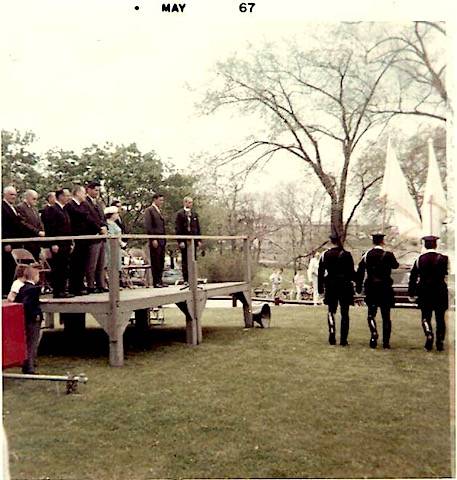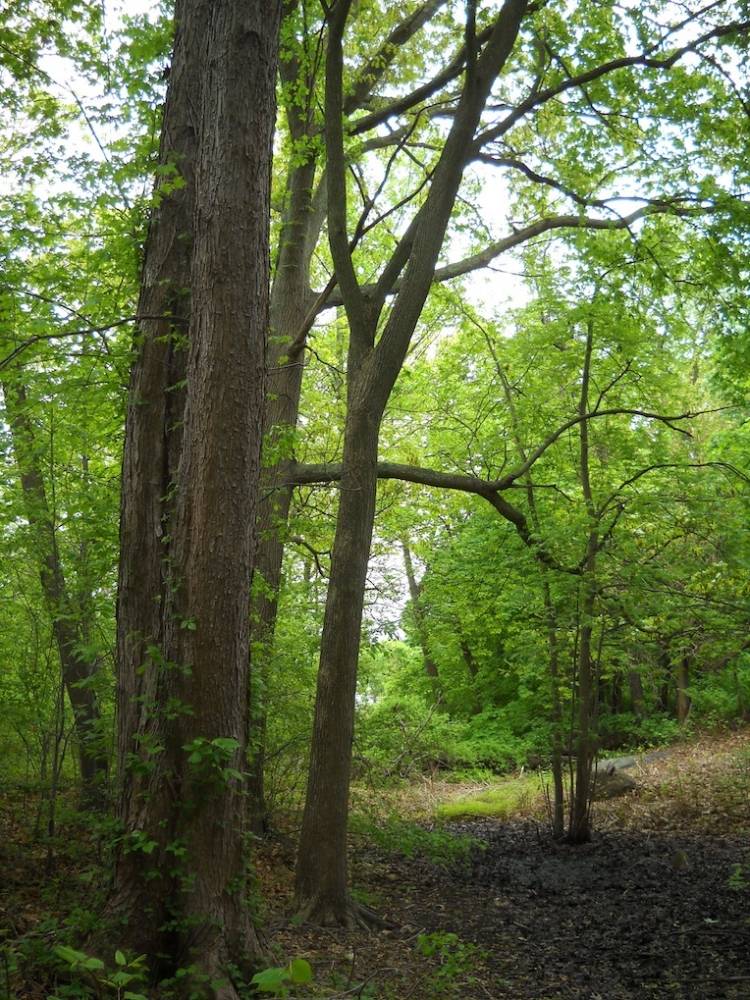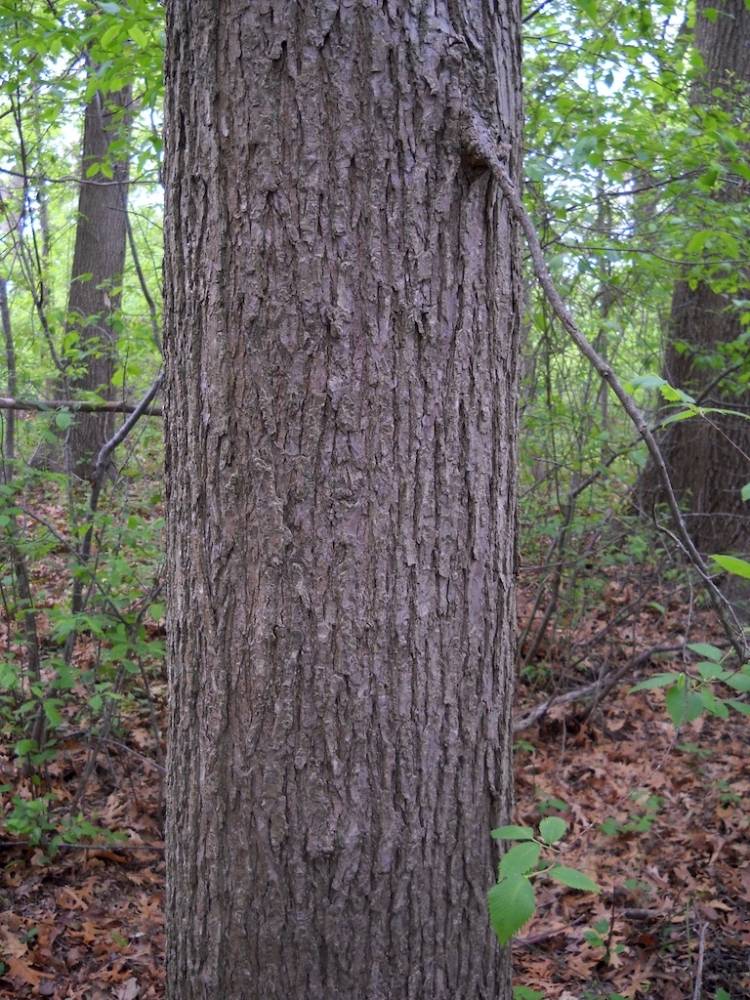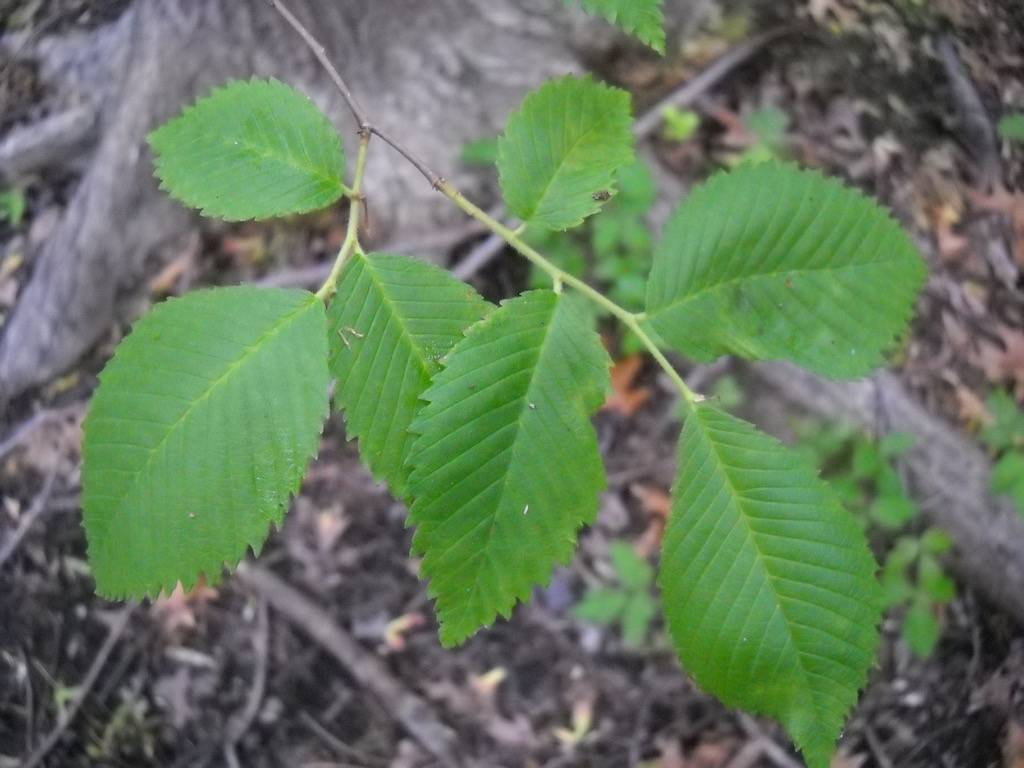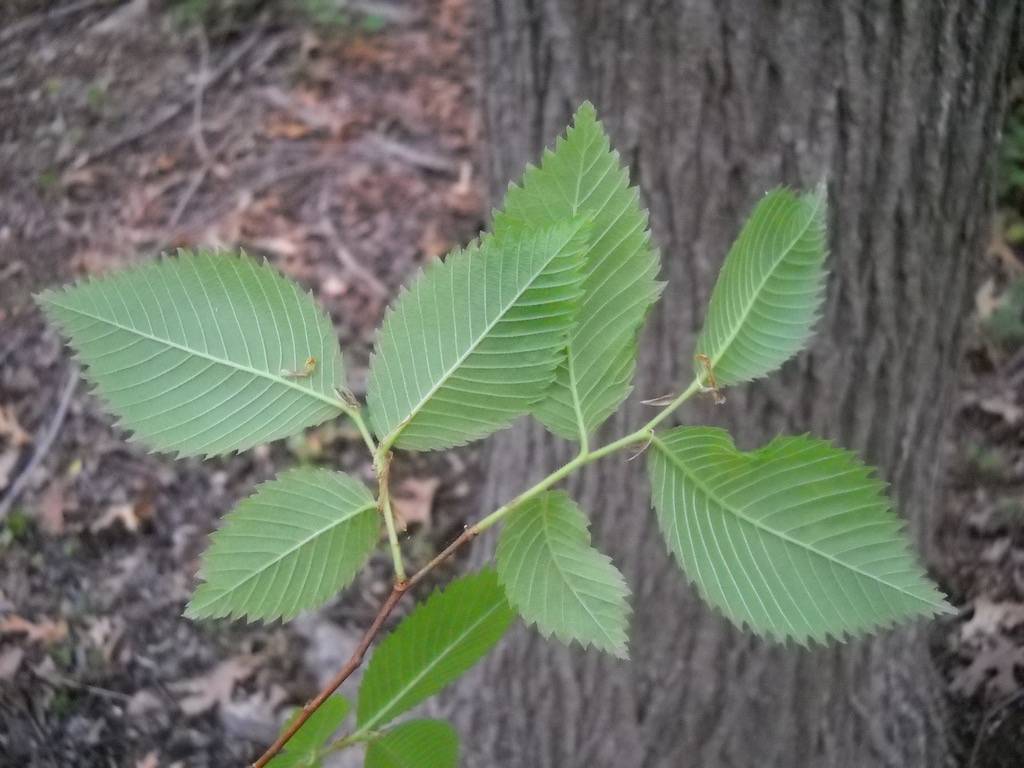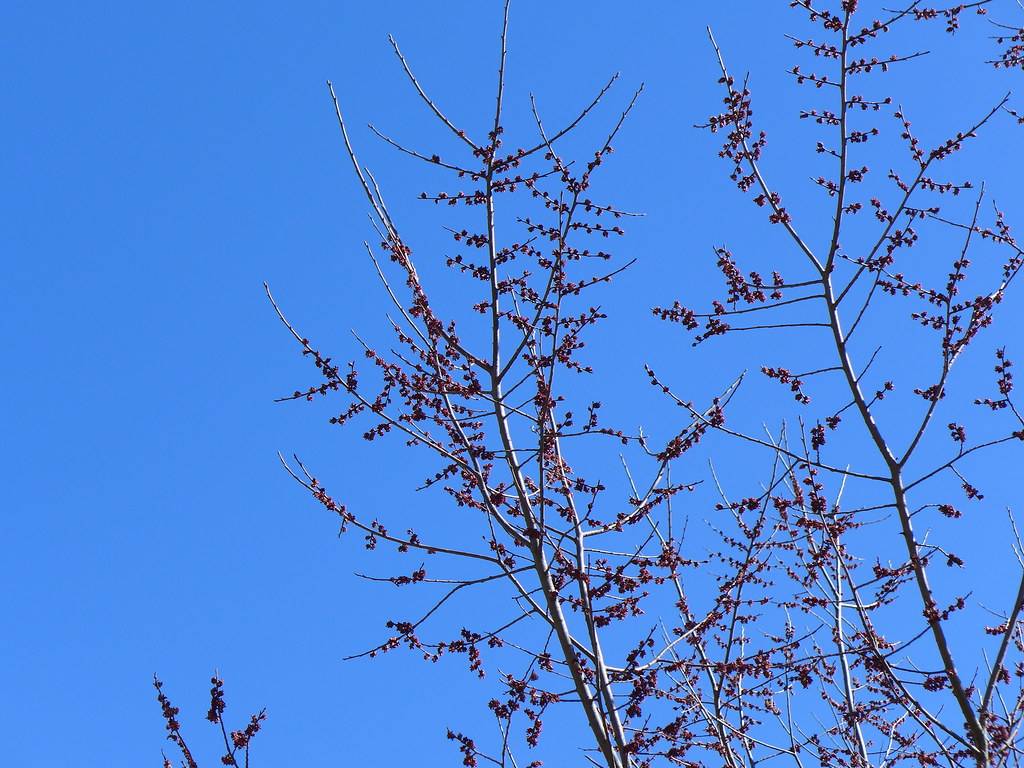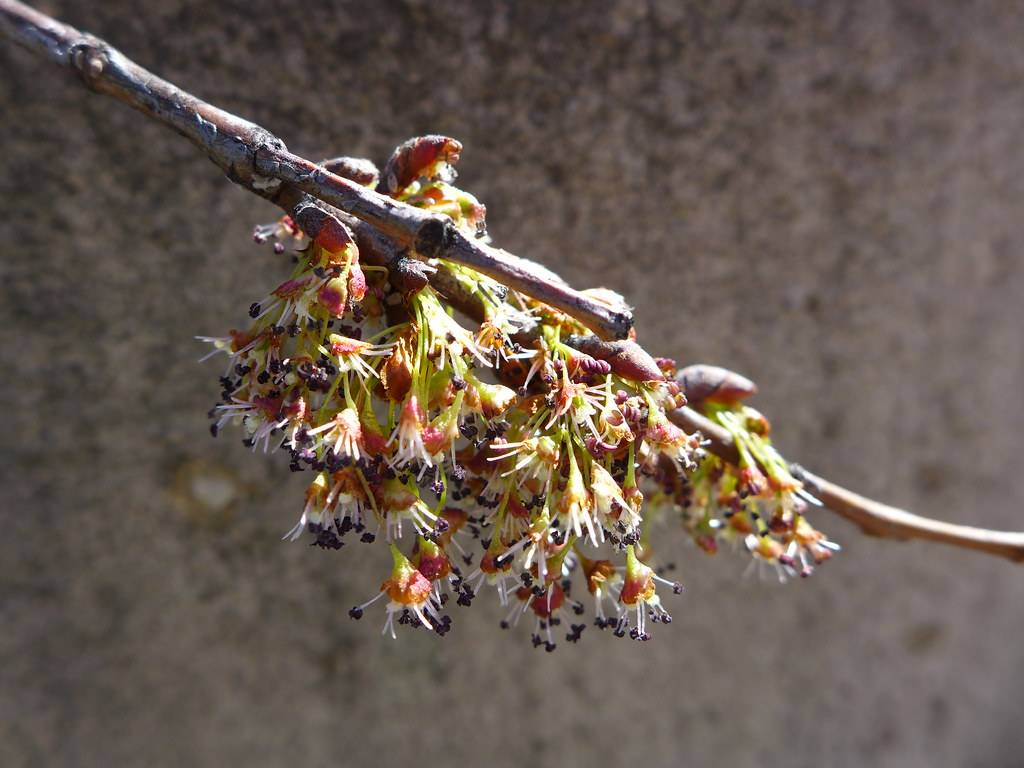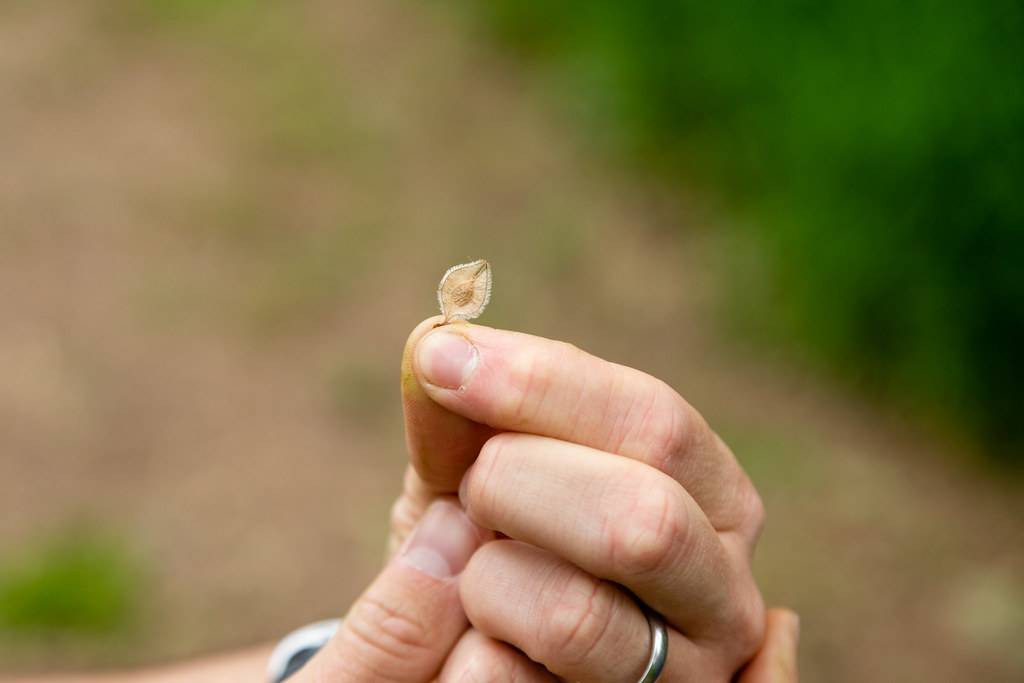American elm
The American elm is native to eastern North American where it thrives in a variety of habitats ranging from bottomland with rich moist soil, stream banks, to hillsides and upland areas with well-drained soils. It is a cold-hardy tree that can grow taller than 100 feet and reach a diameter of four feet. Analysis of growth rings from one fallen giant suggests a potential lifespan of 267 years.
A photograph from the May 1967 Salter Grove dedication ceremony shows two, possibly three large elms in a large clearing near what is now the parking lot. These individuals are long gone and no doubt succumbed to Dutch Elm Disease.
It was therefore a very pleasant surprise to find three American elms still standing at Salter Grove. Two are growing in the shady and moist bottomland along Pond and Audubon trails, and may have gotten started as the wind-dispersed seeds from the large trees in the historic photograph. A third tree grows along the more exposed Marsh Trail and demonstrates the species's ability to grow in very different habitats.
Its rapid growth, graceful form and ability to thrive in various environments led to its great popularity as a street tree during the 19th and early 20th century. However, the dense urban plantings of American elm also led to its rapid decline.
Bark beetles carrying Dutch Elm Disease were unknowingly introduced to North America in shipments of infested logs from the Netherlands to the Ohio furniture industry in 1928. From there, the disease spread steadily and by 1989, only 25% of the 77 million American elms estimated In 1930 were still standing. The elms that survived were either distant from diseased elms, such as the large elms in New York's Central Park, or were individuals naturally resistant to the fungus.
The interlacing wood fibers of American elm is not suitable for fine woodworking but was used effectively in the production of the first automobile bodies, barrel staves, trunk slats, and wagon wheel hubs. The fibrous bark from twigs and young branches was used to make binding material, rope, and whips.
A large American elm that stood on the Boston Common in Boston, Massachusetts also had great symbolic value in the American Revolution. It was called a Liberty Tree, because it served as a rallying point for colonial activists to overthrow British rule.
For more information:
https://gobotany.nativeplanttrust.org/species/ulmus/americana/?pile=woody-angiosperms
http://dendro.cnre.vt.edu/dendrology/syllabus/factsheet.cfm?ID=41
https://www.srs.fs.usda.gov/pubs/misc/ag_654/volume_2/ulmus/americana.htm
https://en.wikipedia.org/wiki/Ulmus_americana

